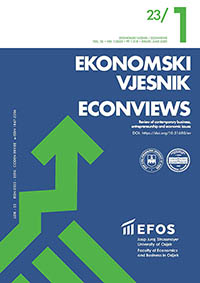Dimensions of attractiveness in employer branding and the value proposition framework for young employees
Dimensions of attractiveness in employer branding and the value proposition framework for young employees
Author(s): Erik Ružić, Dragan BenazićSubject(s): Economy, Labor relations, Human Resources in Economy
Published by: Sveučilište Josipa Jurja Strossmayera u Osijeku, Ekonomski fakultet u Osijeku
Keywords: employer branding; employee value proposition; young employees; talent acquisition; organizational attractiveness;
Summary/Abstract: Purpose: The aim of this paper is to expand the body of knowledge on employer branding by identifying the dimensions of employer attractiveness for Generation Z and to develop a framework for employee value creation in the specific context of Croatian culture. Methodology: The research was conducted on a sample of 220 key informants using the scale developed by Berthon et al. (2005). Since the purpose of the paper was to identify the various dimensions of employer attractiveness as well as the key factors of attractiveness as the basis for value proposition underlying respondents’ perception of employer attractiveness, exploratory factor analysis was applied to analyze the data, i.e. a total of 25 identified employer attractiveness variables. After performing factor analysis, the average rates of importance were measured using summated rating scales for variables of individual factors. Results: The study identified six organizational attractiveness dimensions relevant to Generation Z. In addition, a value proposition framework was developed. The attractiveness dimensions encompass Organization’s market orientation, Acceptance and good relationships with colleagues, Informal characteristics of the workplace, Potential of the workplace for gaining experience and career advancement, Salary and other material benefits, and Sense of belonging to the organization. The dimensions have changed compared to the original Berthon et al. (2005) scale. These differences can be attributed to the specific needs of young employees and to a specific culture and general current conditions. Conclusion: In the “war for talent”, especially for young employees who enter the labor market for the first time, marketing concepts can be a powerful weapon. In order to attract them, their needs and wants should be deeply understood. Based on the proposed value proposition framework and the identified organizational dimensions, a valuable employer brand can be developed and the possibilities to attract and engage employees can be increased.
- Issue Year: 36/2023
- Issue No: 1
- Page Range: 89-100
- Page Count: 12
- Language: English

